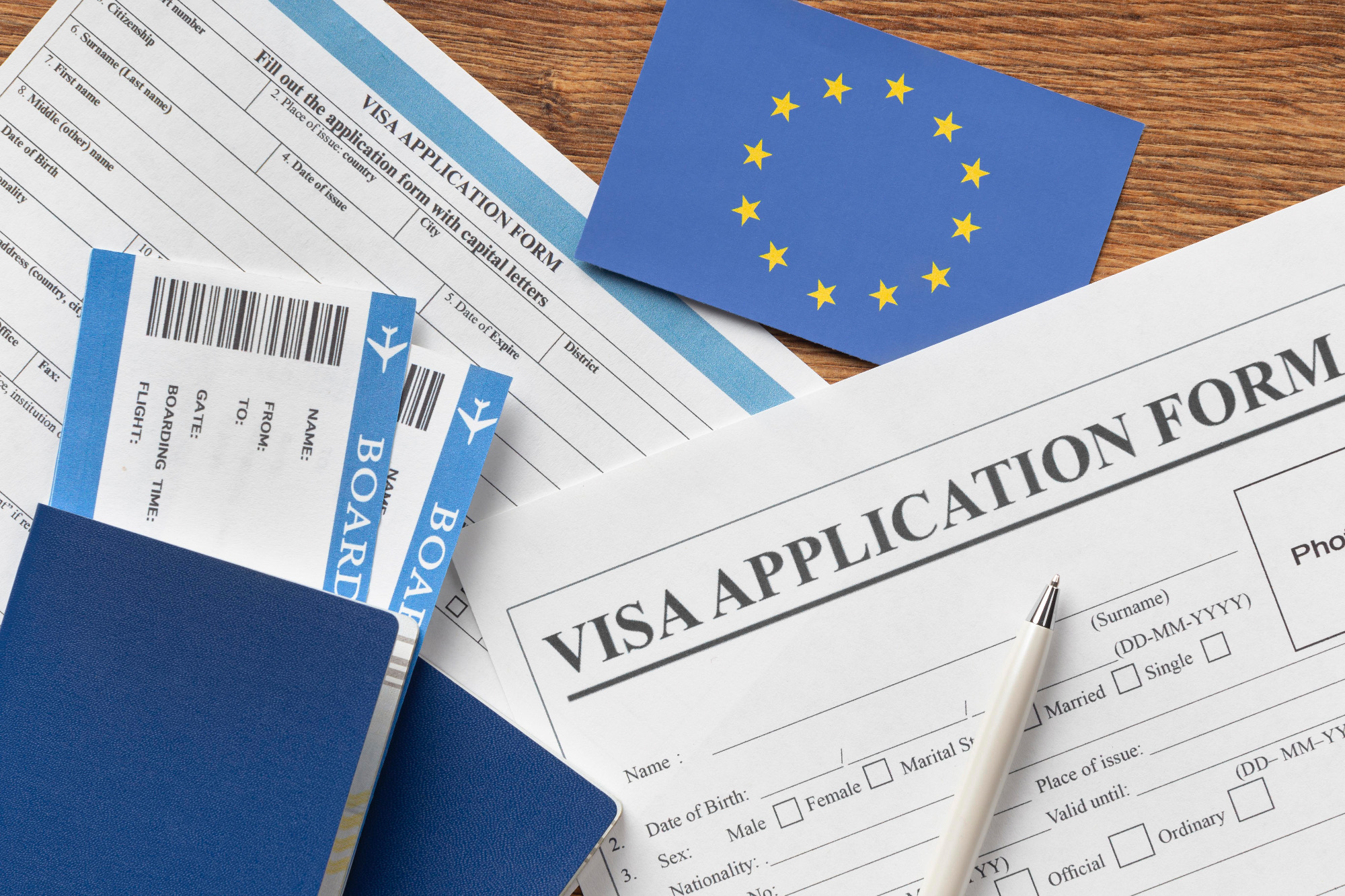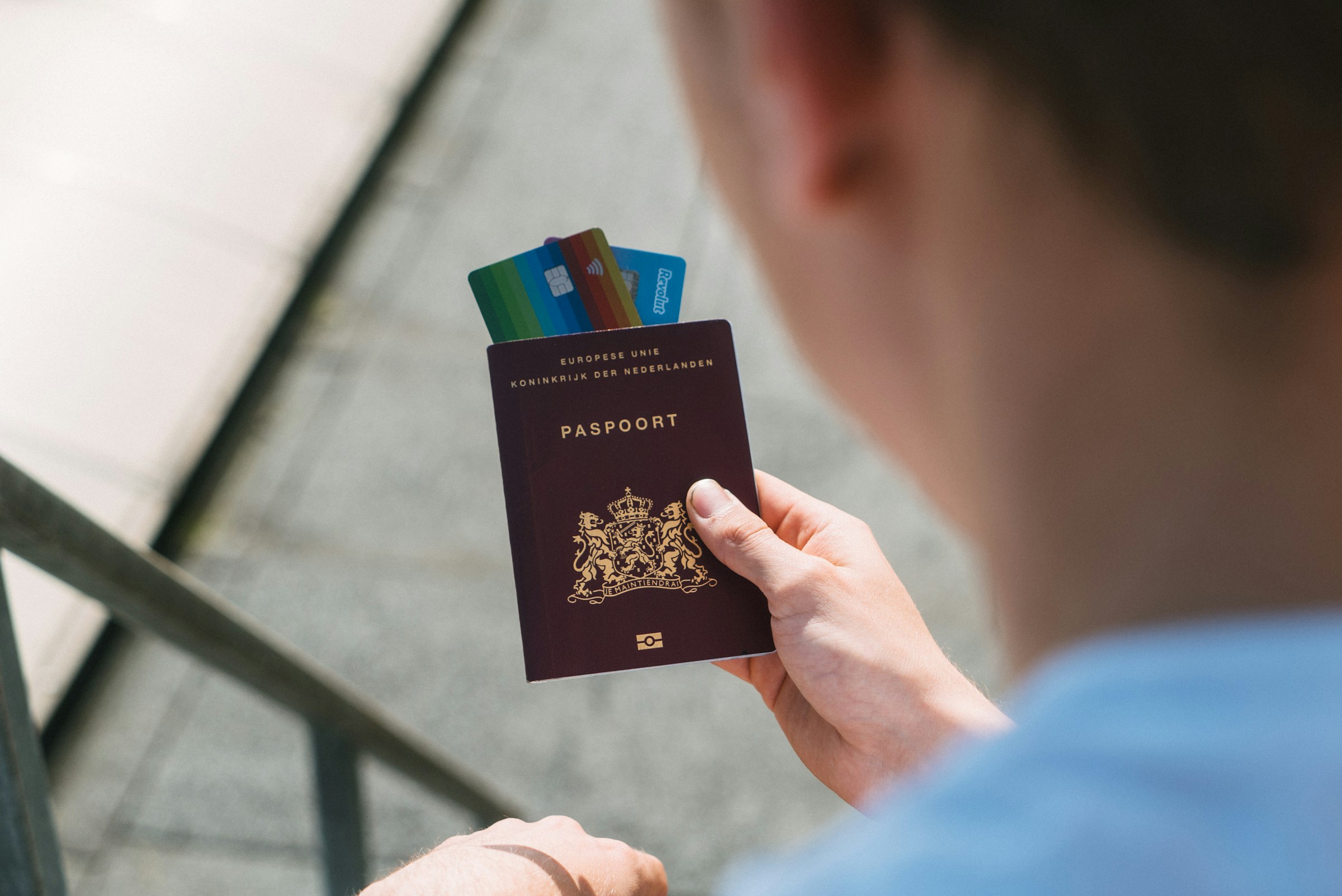Contents
- The EU posted worker directive
- The EU Visa Waiver Scheme
- Preparing for a business trip to the European Union
- Understanding EU visa requirements
- Navigating the Schengen Area
- FAQs about Business Travel to the EU
The EU posted worker directive
If you or your team are traveling to the EU to work for a limited time, without becoming fully integrated into the labor market of that country, you may be subject to the EU Posted Worker Directive (PWD). This typically applies to companies sending employees from an international base to their European offices.

Photo by Jonathan Francisca on Unsplash
The PWD sets the requirements for employers sending their employees to an EU member state for a limited time. The directive was originally introduced to ensure fair play within the European market. This guidance is applicable to companies across every economic sector and industry. Some member states may have specific guidelines, particularly relating to the duration of the employee’s time in the host country. It’s important to note that the PWD also concurs equal pay for equal work with companies being required to report their compliance.
The EU Visa Waiver Scheme
A major change is coming to EU business travel in 2025 with the introduction of the EU visa waiver scheme. This system is comparable to the ETSA program offered by the United States and requires some non-EU citizens to apply for a waiver before traveling to the EU.
The new European Travel Information and Authorisation System will cover travel to the Schengen Area, Iceland, Liechtenstein, Norway, and Switzerland. This visa waiver scheme will allow non-EU citizens to continue to travel to the EU for a duration of 90 days every 180 days.

Photo by Global Residence Index on Unsplash
Like the ETSA scheme, this visa waiver will allow an unlimited number of visits to the EU and lasts for three years. The ETIAS will be attached to your passport, meaning you’ll need to apply for a new visa waiver if your passport expires within those three years. It is expected to cost €7, roughly $7.31 or £5.79.
Preparing for a business trip to the European Union
If you’re auditing or updating your business travel policy, 2025 is the year to start considering your EU travel plans. How you prepare for travel to the EU will largely depend on the passport you hold, and the type of business travel you’re planning.
EU Passport Rules
You will need a valid passport to enter the EU, which must have at least 3 months validity left after the day you intend to leave the EU. It’s also important to note that the EU considers passports as only being valid for 10 years after the issue date. If your passport has “extra months” due to an early renewal, it’s important to make sure the 3-month validity aligns with the 10-year time frame from your issue date.
Do you need an EU visa?
It’s important to know the difference between “Europe” and the “EU.” We recommend checking the entry requirements for every country on your itinerary. For example, the Republic of Cyprus and Ireland have their own visa rules and will not use the EU Visa Waiver System discussed above.

Photo by Anete Lūsiņa on Unsplash
Citizens of countries that currently do not require a visa, such as the United States and Australia, will utilize the visa waiver program when it’s introduced later this year. If you’re a citizen of a country from which the EU requires a visa, such as Russia, China, India, and Mexico, will still need to apply for a visa as normal.
A Schengen Area visa can be issued by any country within the Schengen Area, but it is advisable to apply for a visa from the country you intend to spend the longest time in. You will typically apply for this visa from that country’s consulate or embassy within the country you reside in.
Travel insurance for the EU
While it’s not a legal requirement to have travel insurance when visiting the EU, it is recommended. Shop around for a travel insurance policy that suits your healthcare needs with a level of compensation that works for you.
Understanding EU visa requirements
It’s always best to visit your local government website to determine if you need a visa to visit the EU or if you are part of the visa waiver program. The guidance below is a general overview of the EU visa requirements.

Designed by Freepik
You will need a visa or work permit for the EU if:
- You are providing services or taking part in activities not covered by a visa waiver program
- You are staying for more than 90 days within a 180-day period
- Providing a service or carrying out a contract for a client in another country where your employer does not have a presence
- Providing services in another country as a self-employed person
However, if you are visiting for less than 90 days within a 180-day period, you will not need a visa if:
- you are attending a business meeting, conference, cultural event, or exchange
- you are traveling for media or journalistic purposes.
Navigating the Schengen Area
It’s important to familiarize yourself with the Schengen Area before visiting the EU. The Schengen Area is a region across Europe with no border checks, enabling people to travel freely between countries. While it includes most EU states, it does not include Ireland or Cyprus, but does include Switzerland, Iceland, Norway, and Liechtenstein. You cannot spend more than 90 days within a 180-day period within the Schengen area, regardless of how many counties you visit. The 180-day period is counted on a rolling basis.
The EU is also preparing to introduce a new Entry/Exit System (EES), replacing the traditional passport stamps. Your fingerprint and photo will be taken when you first enter and leave the Schengen area. The Entry/Exit system is due to be introduced in 2025, however, there is no confirmed start date. Once introduced, you will be able to use the EES to check how many days you are still allowed to remain in the EU.

Photo by CardMapr.nl on Unsplash
FAQs about Business Travel to the EU
Are you looking for more advice on planning business travel to the EU? Contact our 24/7 customer support team.
What countries are members of the EU?
The European Union consists of 27 countries that operate within a single market, facilitating freedom of movement for capital, goods, people, and services.
Members of the EU include Austria, Belgium, Bulgaria, Croatia, the Republic of Cyprus, the Czech Republic, Denmark, Estonia, Finland, France, Germany, Greece, Hungary, Ireland, Italy, Latvia, Lithuania, Luxembourg, Malta, the Netherlands, Poland, Portugal, Romania, Slovakia, Slovenia, Spain, and Sweden.
Do I need health or travel insurance when visiting the EU?
While it is not a legal requirement to have travel or health insurance when visiting the EU, it’s a good idea to invest in it. Travel insurance can help offset the cost of medical expenses, lost luggage, or trip cancellations.
We recommend buying travel insurance as soon as possible before your trip and reading the fine trip to fully understand your coverage, including any exclusions.
What is the best way to travel around the EU?
Trains are the most popular option for traveling across Europe, especially if you’re transiting between major cities, like Paris and Brussels.
Read our guide to the “Top 5 City Train Routes for Business Travel in Europe” for ideas for building your business travel itinerary.
Why is the U.K. not in the Schengen Area?
If you’re visiting the EU for business, you may also be considering stopping by the UK. The UK is no longer a member of the EU and has never been a member of the Schengen zone. You can check entry requirements for visiting the UK on the official government website.
Can I travel anywhere in Europe with Schengen Visa?
You can travel throughout Europe with a Schengen visa, so long as you’re visiting countries that are part of the Schengen area. Make sure to take the requirements for each destination in your itinerary, as visa requirements can vary. For example, Ireland has its own travel requirements due to the common travel area that exists with the UK.
Make EU business travel stress-free with Roundtrip
At Roundtrip, we’re here to streamline your business travel across Europe with simplified booking options. You’ll get access to over 2.6 million hotels with exclusive rates on a platform that allows you to book everything from airport transfers to train travel and accommodation.
Explore corporate travel solutions designed to support finance teams, travel managers, and self-bookers. Our multi-lingual helpline is available 24/7 for added peace of mind. Book your next European business trip with Roundtrip and take the stress out of corporate travel.
Cover image: Photo by Floriane Vita on Unsplash


